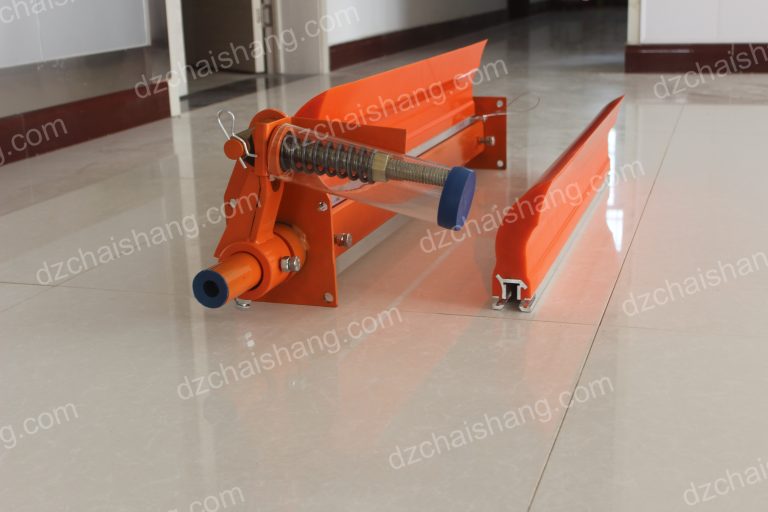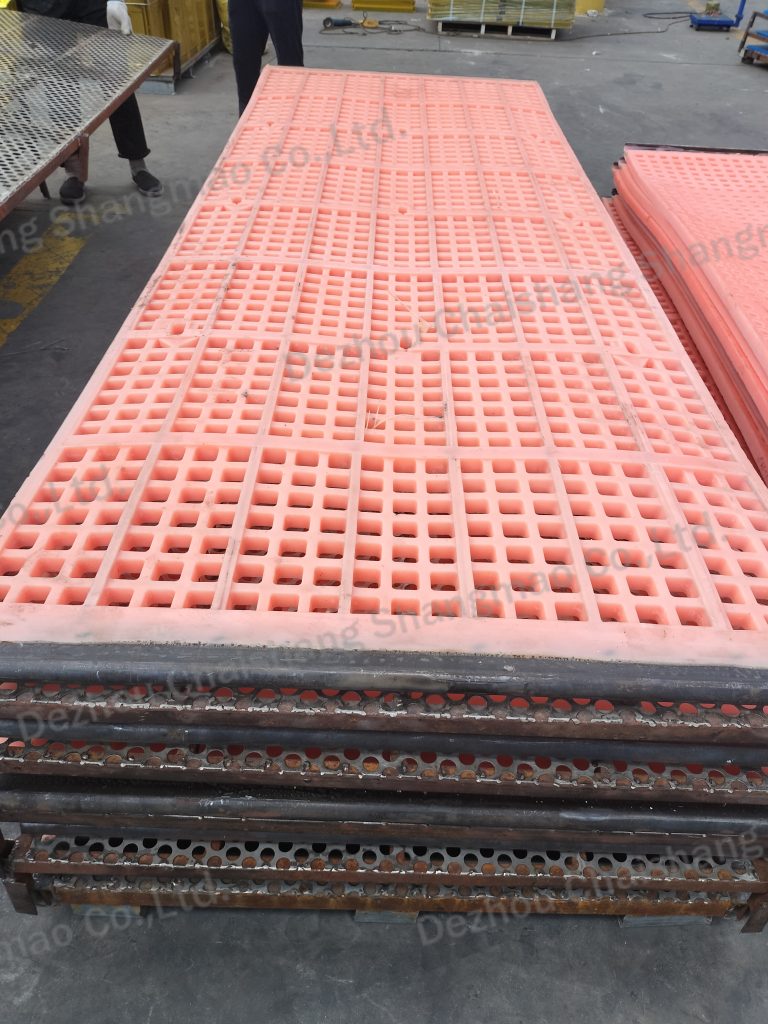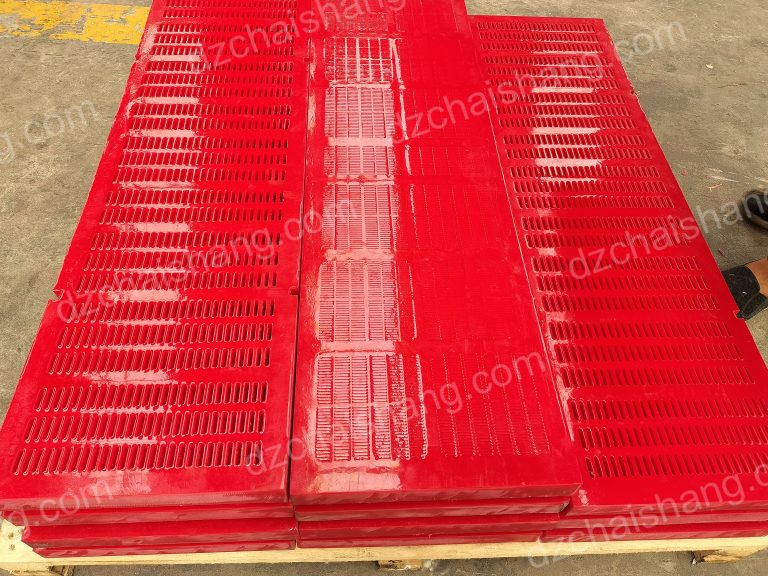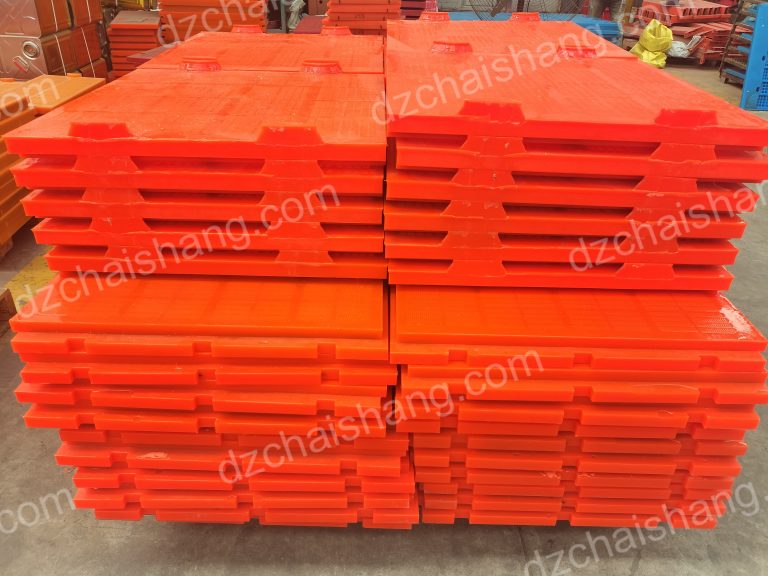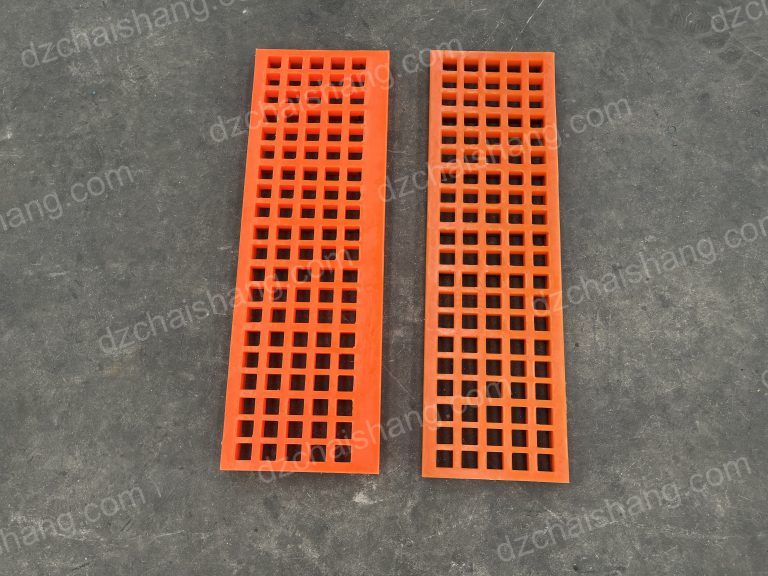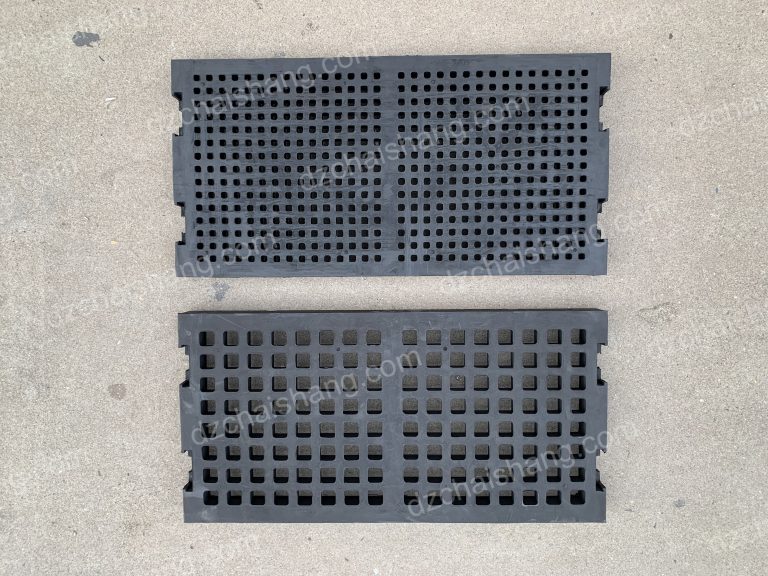polyurethane sieve toward,polyurethane sieve panel 600,polyurethane screen plate set
The Benefits of Using polyurethane sieve Panels and screen Plates . in Industrial Applications. Polyurethane sieve panels and screen plates are becoming…
The Benefits of Using polyurethane sieve Panels and screen Plates .
in Industrial Applications. Polyurethane sieve panels and screen plates are becoming increasingly popular in industrial applications due to their superior durability and performance. This blog post will discuss the advantages of using polyurethane sieve panels and screen plates in industrial applications, including their resistance to wear and tear, their ability to reduce noise levels, and their cost-effectiveness. Additionally, this post will provide tips on how to select the right polyurethane sieve panel and screen plate for your specific application
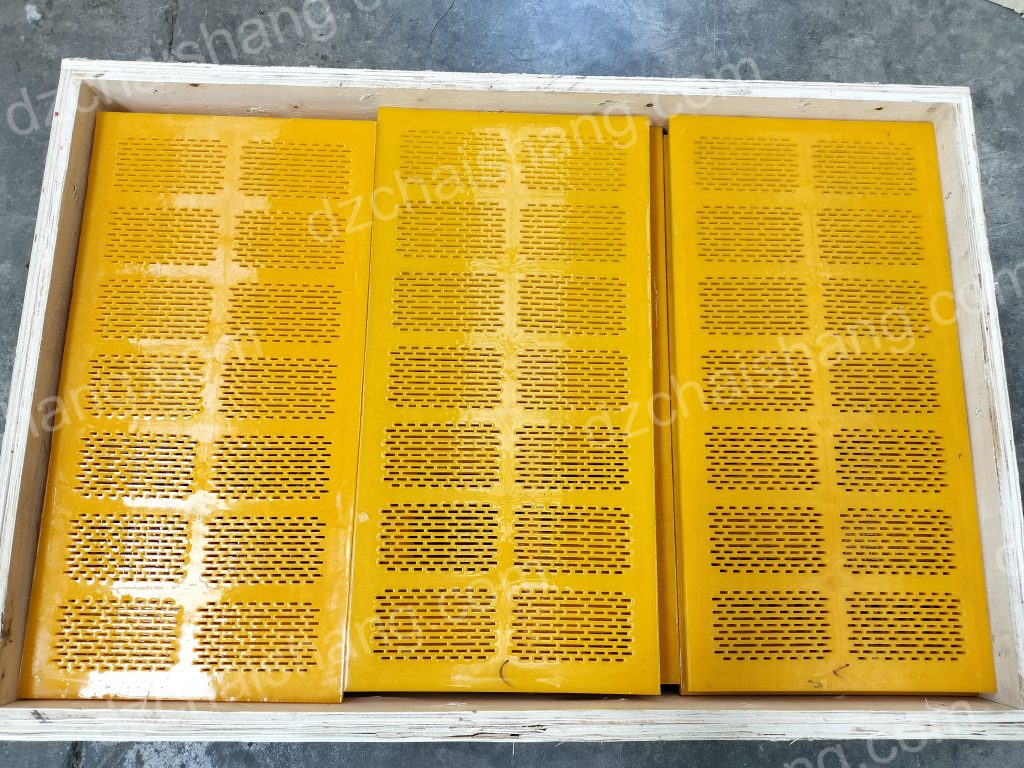
Advantages of polyurethane screen plates:
- Long service life and large carrying capacity. Because the polyurethane elastic screen plate uses steel wire rope as the skeleton material, and the polyurethane itself has a very high elastic modulus, high strength to absorb impact force, and high wear resistance, it has high tensile strength, and its load-bearing capacity is that of the rubber screen plate. More than 2.5 times. Its service life is 8-10 times longer than that of ordinary metal screen plates, 3 times that of stainless steel screen surfaces, and 3.9 times that of natural rubber. It is currently the screen surface material with the best wear resistance in the world. The production material of polyurethane screen plate is a polymer organic elastomer, which has excellent wear resistance, flexibility resistance and large load-bearing capacity. The raw materials for the production of polyurethane screen plates have been specially treated to ensure that they will never delaminate under long-term alternating loads.
- High screening efficiency. The screen surface has self-cleaning properties, does not block holes, and has high screening efficiency. Due to the strong water permeability of polyurethane and the large cone angle of the screen hole (140°), it can effectively prevent the adhesion of wet fine-grained materials, so it is suitable for screening and classifying wet fine-grained materials. The polyurethane screen plate of our factory uses imported raw materials, and its elastomer and its own good relaxation properties can effectively avoid hole plugging under dynamic conditions.
- It has a wide range of applications and stronger professional applicability. It is suitable for any type of vibrating screen machine and can be machine-made. Polyurethane screen plates are professionally used in hydropower stations, building materials and other metal processing industries. Screening of various materials within the range of 0.1mm-170mm, regardless of dry screening or wet screening, will not affect the screening efficiency. For dehydration and demediation screens in the range of 0.5m-3mm, the superiority of the polyurethane screen surface is more fully demonstrated. The product is water-resistant, corrosion-resistant, aging-resistant, and easy to replace and maintain. Polyurethane has a small density (1.32kg/m 3 ) and is lighter than a metal screen surface, which can reduce production unit consumption and therefore can adapt to the requirements of large-scale development of screen machines.
- High screening accuracy. The production process of the polyurethane screen plate adopts the mold casting process. The aperture is accurate, the screening quality is high, and the particle size of the materials under the screen can well meet the user’s requirements. It is simple to install and easy to replace and repair. This product is suitable for any type of screening machine. It is light in weight and can be installed or replaced on site, which greatly reduces the workload.
- The working noise is low and complies with the national environmental noise standards. According to actual measurements, the polyurethane screen plate used in the same screen machine can reduce the noise by 5-20 decibels compared with the metal screen plate, and greatly reduce the flying dust, thus creating a quiet and clean working environment at the production site.
- Significant economic benefits. Although the price of polyurethane rubber screen surface is higher than that of metal screen plate, if factors such as screening efficiency, maintenance cost, service life and other factors are comprehensively considered, it will be found that the overall benefit of polyurethane screen surface is much better than that of ordinary metal screen surface. According to surveys, 45 tons of steel can be saved for every ton of polyurethane rubber screen plates used. Saved more than 40,000 yuan in maintenance costs. Therefore, polyurethane screen surface replacing steel screen surface will be the inevitable choice for most enterprises in the future.

Characteristics of polyurethane elastomer:
- Wide hardness range. And it still has good rubber elasticity and elongation under high hardness.
- High strength. At rubber hardness, their tensile strength and tear strength are much higher than general rubber; at plastic hardness, their impact strength and bending strength are much higher than plastic.
- The performance can be adjusted in a wide range. A number of physical and mechanical performance indicators can be changed within a certain range through the selection of raw materials and adjustment of the formula, thereby meeting the different requirements of users for product performance.
- Wear-resistant. It is known as “wear-resistant rubber”. Especially under working conditions in the presence of water, oil and other humidifying media, its wear resistance is often several to dozens of times that of ordinary rubber materials.
- Oil resistant. The oil resistance of polyester polyurethane elastomer is no less than that of nitrile rubber and is equivalent to polysulfide rubber.
- Excellent ozone resistance.
- Good shock absorption, radiation resistance and breathability resistance.
- Various processing methods and wide applicability. Polyurethane elastomer can be molded using the same mastication, mixing, and vulcanization processes as general rubber (referred to as MPU); it can also be made into liquid rubber, cast and molded or sprayed, potted, and centrifugally molded (referred to as CPU); it can also be made into liquid rubber. It is formed into pellets, like ordinary plastics, by injection, extrusion, calendering, blow molding and other processes (referring to CPU). Molded or injection molded parts can also be processed by cutting, grinding, drilling and other mechanical processing within a certain hardness range. The diversity of processing makes polyurethane elastomers very versatile and its application fields continue to expand.


